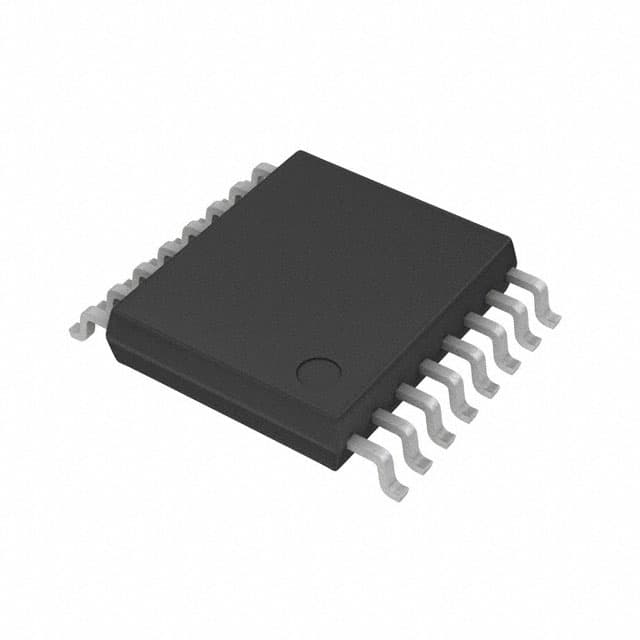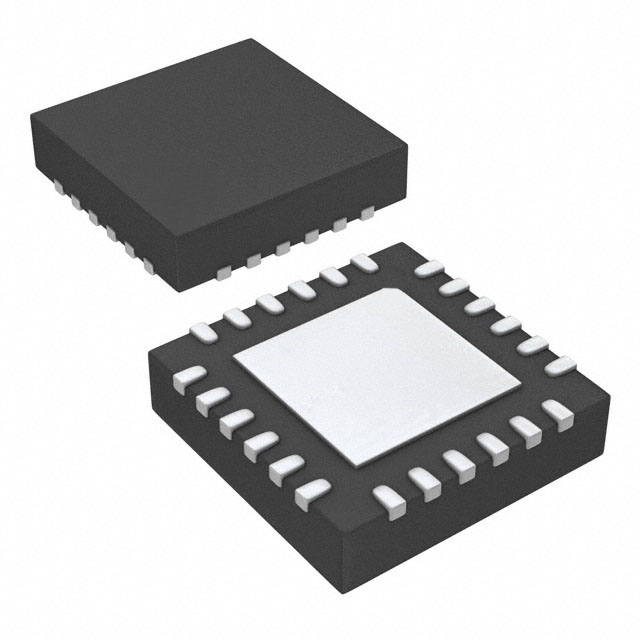Ⅰ. Clock/Timing - Application Specific
Ⅱ. Physical Characteristics of Clock/Timing - Application Specific
Ⅲ. Electrical Characteristics of Clock/Timing - Application Specific
Clock/Timing - Application Specific
Clock/timing plays a critical role in electronic systems by providing precise timing references and synchronization for various application-specific requirements. In application-specific scenarios, clock/timing is tailored to meet specific timing constraints and optimize system performance. Here is an introduction to clock/timing in application-specific contexts:

1.Communication Systems: In communication systems, clock/timing ensures the accurate and synchronized transfer of data between sender and receiver. It enables proper framing and synchronization of data packets, minimizing errors and ensuring efficient transmission. Examples include Ethernet networks, wireless communication systems, and protocols like USB (Universal Serial Bus).
2.Digital Signal Processing (DSP): DSP applications rely on clock/timing for precise sampling, processing, and reconstruction of analog signals. It ensures synchronized operations of ADCs, DSP algorithms, and digital filters, enabling accurate signal analysis, modulation, demodulation, and other signal processing tasks.
3.Data Storage Systems: Clock/timing is crucial in data storage systems such as hard disk drives (HDDs) and solid-state drives (SSDs). It ensures precise timing for data read/write operations, synchronization of storage components, and proper error correction coding, ensuring reliable and efficient data storage.
4.Automotive Systems: Clock/timing is extensively used in automotive applications for functions such as engine control, vehicle communication, infotainment systems, and driver assistance. It provides synchronization for sensors, actuators, communication interfaces, and ensures coordinated and timely operation of various automotive subsystems.
5.Aerospace and Avionics: Aerospace and avionics systems heavily rely on accurate clock/timing for flight control, navigation, communication, and data acquisition. Precise timing references synchronize various avionics subsystems, including flight computers, radar systems, navigation systems, and satellite communication systems, ensuring safe and efficient aircraft operation.
6.Industrial Automation: In industrial automation systems, clock/timing is essential for synchronizing control devices, sensors, actuators, and communication networks. It ensures coordinated operation of robotic systems, manufacturing equipment, process control systems, and enables precise timing for data acquisition and feedback control loops.
7.Test and Measurement Equipment: Clock/timing is critical in test and measurement equipment to ensure accurate and synchronized measurements across multiple channels. It enables precise triggering, synchronization of acquisition devices, and time-stamping of acquired data, ensuring reliable and accurate measurements.
8.Audio and Video Applications: Clock/timing is vital in audio and video applications to ensure synchronization between different audio/video sources, receivers, and display devices. It enables lip-sync accuracy, smooth playback, seamless switching, and synchronization of audio and video streams in multimedia systems, broadcasting, and professional audio/video production.
These examples demonstrate how clock/timing in application-specific contexts is tailored to meet specific timing requirements, ensuring accurate data transfer, synchronization, and system performance. The precise implementation and configuration of clock/timing subsystems vary depending on the specific application and its timing constraints.
Physical Characteristics of Clock/Timing - Application Specific
Physical characteristics of clock/timing systems can vary depending on their application-specific requirements. Here are some important physical characteristics to consider in application-specific clock/timing systems:
1.Form Factor: The form factor refers to the physical size, shape, and mounting style of the clock/timing system. It can vary based on the specific application and the form factor standards followed in the industry. Examples include rack-mountable units, board-level modules, compact embedded modules, or custom-designed enclosures.
2.Connectors: Clock/timing systems typically have specific connectors for input and output interfaces. The type of connectors used depends on the application and the signals being transmitted. Common connector types include BNC (Bayonet Neill-Concelman), SMA (SubMiniature version A), or specialized connectors specific to the application domain.
3.Environmental Considerations: Depending on the application, clock/timing systems may need to meet specific environmental standards. This includes considerations for temperature range, humidity, shock, vibration, or protection against dust and moisture. Clock/timing systems designed for rugged or harsh environments may have additional protective features.
4.Signal Interfaces: Clock/timing systems often require various signal interfaces to connect with other components or systems. These interfaces can include digital interfaces like Ethernet, USB, or serial communication protocols, as well as analog interfaces such as voltage-controlled oscillators (VCOs) or pulse-per-second (PPS) signals.
5.Mounting Options: Depending on the application, clock/timing systems may support different mounting options. They can be designed for rack-mounting, panel-mounting, PCB mounting, or customized mounting methods to suit the specific installation requirements.
6.Power Supply: Clock/timing systems have specific power supply requirements, such as voltage levels and current consumption. The power supply options can include AC (alternating current) mains, DC (direct current) power sources, or PoE (Power over Ethernet) for certain applications.
7.Indicator LEDs/Displays: Clock/timing systems may include indicator LEDs or displays to provide visual feedback on the status and operation of the system. These indicators can show power status, signal presence, error conditions, or other relevant information, aiding in system monitoring and troubleshooting.
8.Modularity and Expandability: In some application-specific clock/timing systems, modularity and expandability are important considerations. The systems may offer modular architecture or expansion slots that allow for the addition of additional functionality or interfaces to adapt to evolving requirements.

Electrical Characteristics of Clock/Timing - Application Specific
Electrical characteristics of clock/timing systems in application-specific contexts are tailored to meet the specific requirements and ensure optimal performance. Here are some important electrical characteristics to consider:
1.Frequency Range: The frequency range of a clock/timing system determines the range of frequencies it can generate or accept. Different applications require specific frequency ranges based on their timing requirements. For example, high-speed data communication systems may require clock frequencies in the gigahertz range, while low-power embedded systems may operate in the kilohertz or megahertz range.
2.Frequency Accuracy and Stability: The accuracy and stability of the clock/timing system refer to its ability to maintain a precise and stable frequency over time. It is typically specified as the frequency deviation or error from the ideal frequency. Applications with strict timing requirements, such as telecommunications or data synchronization, demand high accuracy and stability.
3.Duty Cycle: The duty cycle represents the ratio of the clock/timing signal's active (high) duration to its total period. It is usually expressed as a percentage. Certain applications, like digital systems and protocols, may require specific duty cycle values to ensure proper signal interpretation and timing.
4.Rise/Fall Time: The rise and fall times of a clock/timing signal indicate the time it takes for the signal to transition between its low and high states, or vice versa. Fast rise/fall times are important in high-speed digital systems to minimize signal distortion and ensure accurate data transfer.
5.Output Voltage Levels: Clock/timing systems may have specific output voltage levels to ensure compatibility with other system components. The output voltage levels can be specified in terms of amplitude or voltage logic levels, such as TTL (Transistor-Transistor Logic) or CMOS (Complementary Metal-Oxide-Semiconductor) levels.
6.Output Drive Strength: The output drive strength refers to the capability of the clock/timing system to drive the signal to multiple loads or through long transmission lines. Applications that require driving signals over long distances or multiple devices may require clock/timing systems with higher output drive strength.
7.Jitter and Phase Noise: Jitter is the variation in the timing of a clock/timing signal's edges, while phase noise refers to the random fluctuations in the signal's phase. Both jitter and phase noise can degrade system performance, especially in high-speed data communication systems or sensitive applications like precision measurements. Low jitter and phase noise are desirable characteristics in such cases.
8.Input/Output Impedance: The input and output impedance of a clock/timing system should match the impedance of the interfacing components or transmission lines to minimize signal reflections and ensure efficient signal transfer. Impedance matching is crucial for high-frequency applications to maintain signal integrity.
9.Power Consumption: Power consumption is an important consideration in many applications, particularly in portable devices or energy-efficient systems. Clock/timing systems should have low power consumption while still meeting the required performance specifications.
10.EMI/EMC Compliance: Electromagnetic interference (EMI) and electromagnetic compatibility (EMC) considerations are crucial in applications where clock/timing systems should not interfere with other system components or be susceptible to external interference. Compliance with EMI/EMC standards ensures reliable operation in diverse electromagnetic environments.



